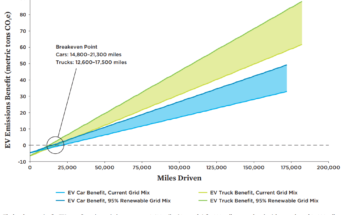Methane is a problem on multiple levels for several years. There are more and more emerging indicators that methane hydrate may be a ticking time bomb, with the critical heat absorption in the oceans setting the switch.
We don’t know how much heat the ocean needs to absorb to set a feed forward system in motion, but there are multiple indicators that this may be a huge problem.
We’ve known that there are huge methane reserves at the bottom of the world’s oceans for many years (I think I first heard of th is about ten years ago). From the Independent four years ago:
- Atmospheric levels of methane, the greenhouse gas which is much more powerful than carbon dioxide, have risen significantly for the last three years running, scientists will disclose today – leading to fears that a major global-warming “feedback” is beginning to kick in.
- Many climate scientists think that frozen Arctic tundra, like this at Sermermiut in Greenland, is a ticking time bomb in terms of global warming, because it holds vast amounts of methane, an immensely potent greenhouse gas. Over thousands of years the methane has accumulated under the ground at northern latitudes all around the world, and has effectively been taken out of circulation by the permafrost acting as an impermeable lid. But as the permafrost begins to melt in rising temperatures, the lid may open – with potentially catastrophic results.
We also learned this year that within arctic, methane has begun to be released at substantially higher rates. From this month’s Phys.org:
Warming of the Pacific Ocean off Washington state could destabilize methane deposits on the seafloor and trigger a release of the greenhouse gas to the atmosphere, according to a new study published in Geophysical Research Letters.
In the worst-case scenario, if oceans warm by up to 2.4 degrees Celsius by 2100, the volume of methane release every year by 2100 would quadruple the amount by the Deepwater Horizon oil spill, the study estimates.
At issue are methane hydrates, which are complexes of methane trapped in frozen ice buried in ocean beds. The hydrates are found throughout the world’s oceans and are maintained by cool water and immense pressures. But as the oceans warm, the hydrates get destabilized and methane is released.
We also know now that methane deposits have been reported in non-arctic situations as well, From this month’s Scientific American:
Warming of the Pacific Ocean off Washington state could destabilize methane deposits on the seafloor and trigger a release of the greenhouse gas to the atmosphere, according to a new study published in Geophysical Research Letters.
In the worst-case scenario, if oceans warm by up to 2.4 degrees Celsius by 2100, the volume of methane release every year by 2100 would quadruple the amount by the Deepwater Horizon oil spill, the study estimates.
At issue are methane hydrates, which are complexes of methane trapped in frozen ice buried in ocean beds. The hydrates are found throughout the world’s oceans and are maintained by cool water and immense pressures. But as the oceans warm, the hydrates get destabilized and methane is released.
We also now know that the warmest its ever been rose very quickly in two jumps during the Paleocene-Eocene Thermal Maximum, 56 Million years ago, which is consistent with a methane hydrate release, as documented in Ars Technica this month.
The isotope shift of the PETM shows up loud and clear, but there was a surprise at the start—there was also a brief spike just before the start of the PETM. This has been hinted at before, but it was not shown unambiguously. The initial isotopic shift was about half as large as the main one, but it quickly dropped back to the previous value before making the big jump that lasted for the rest of the PETM.
The age estimates (which are tricky for rocks like these) put that short-lived spike at about 2,000 to 5,000 years long. A thousand years or so after that spike, the main shift started. The upswing of each shift—signifying the release of carbon to the atmosphere—clocks in at less than 1,500 years.
So what could that tell us about what the release was? The researchers used a carbon cycle model to figure it out. Obviously, the presence of two carbon releases suggests you might need something capable of releasing carbon twice. Some have wondered if a meteoroid impact might have been responsible, but that’s a one-off event. Cramming such large releases into 1,500 years or less also points you away from processes that would have taken more time, like gradually thawing permafrost. The researchers think the best fit is with scenarios like methane hydrate releases from the seafloor or large volcanic events burning through organic-rich sediments.
None of this proves that methane hydrate is on the verge of a large release, but there are more and more dots worth considering.

